This pitcher plant is Nepenthes Rajah and yes it is in Sabah! The best place to see Nepenthes Rajah is in Mesilau, about 2-hour drive from Kota Kinabalu (12 KM away from Kundasang town). All you need to do is just going to Mesilau Nature Resort and register for a 2-hour guided tour that is started at 11:30am. For Malaysian adults, the fee is only RM5 (RM10 for foreigner tourists). A park ranger will walk you to the natural habitat of Rajah pitcher plant.
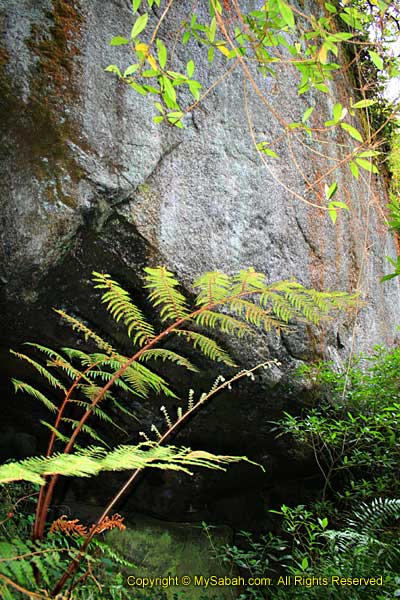
Mesilau is nearly 2,000 Metres above sea level so the air is a bit cooling. You don’t feel really warm when you walk in the first 20 minutes of Mesilau trail, which is under the shade of sub-montane forest. The first thing you pass by is the Mesilau cave. It is not so deep anyway.
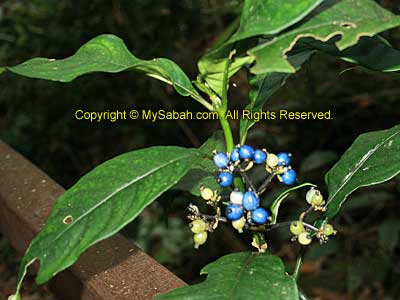
Sabah Parks ranger, Mr. Sukaibin, was very knowledgeable and introducing the plants that we saw along the trail. Above is a coffee plant that probably we can call it “Mesilau Coffee”? We also saw a bush warbler bird just feet away.
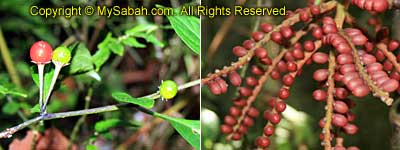
Photo at left above is a tomato plant, the left is wild pinang (betel nut). We saw a few ginger flowers too. It is such a lovely nature garden. Too bad I didn’t see any red-lipped snake, which is endemic to Sabah only. It likes to warm itself on the rock exposed to morning sunlight. Its kiss of death is 3 times more venomous than cobra. Sukaibin said someone cooked and ate the snake before, and got tummy ache, in a way suggesting that its meat is poisonous too.
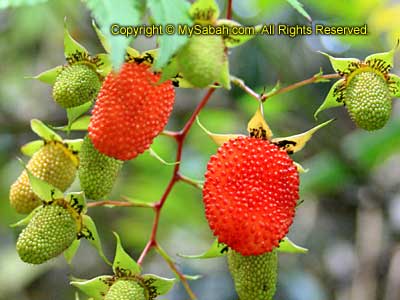
Juicy wild berry (photo above) is abundant in Mesilau. It looks tasty but we are not sure if it is edible. Look safe to me. Then we came to a big boulder (photo below) with soil seemed to be removed at the bottom, enough to fit a few people. According to the guide, this huge rock was coming from top of Mt Kinabalu due to a landslide some 50,000 years ago during ice age. Legend passed down from ancestors said the space under this boulder was a temporary hiding place for villagers who were trying to escape from a plague.
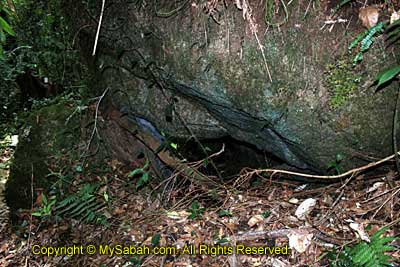
Finally we arrived a locked gate. Sukaibin opened the gate and we crossed a small river on a hanging suspension bridge.
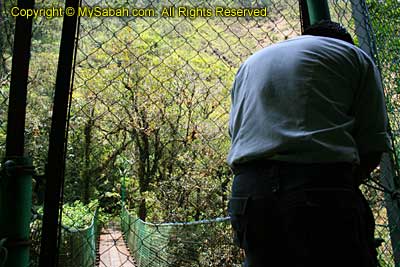
When you see many big rocks and boulders in river, that means it is an upstream. This ordinary river was how Mesilau got its name. During rainy day, the water will wash the soil down into this river, turning it into yellowish colour. Mesilau means “Yellow River.”
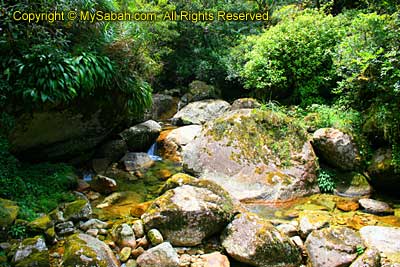
Then the next minute it was a walk to the trail uphill. The slope was created by landslide. Most part does not have boardwalk and railing for walking, so you need to walk carefully and make sure you wear suitable shoes.
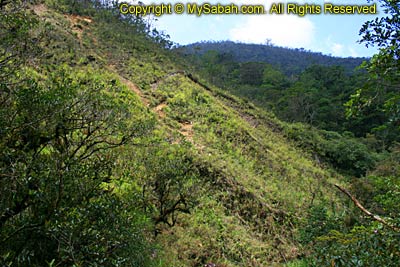
Every soon I saw the first pitcher plant. It is quite big but it is not Nepenthes Rajah that I looked for. However, it is Nepenthes burbidgeae discovered in 1800’s and only found in Kinabalu Park of Sabah. The dark dots make this pitcher looks so cute.
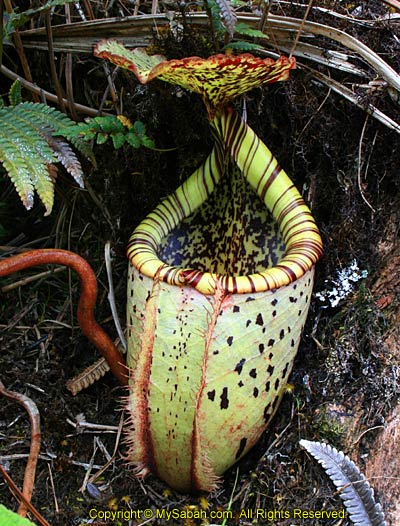
“Monkey Cup” is another nickname for pitcher plants. In early days, researchers saw a group of monkeys sitting next to pitcher plant, making it looked like the cup of monkeys thus giving this name. I doubt if monkey really drinks the water in the cup coz the fluid is acidic and poisonous. Pitcher plants normally grow on the soil which is very poor in nutrients. As you can see in the photo below, the soil in Mesilau is dry and yellow and mixed with rocks and sand. Even the trees here are few and short, an obvious sign of infertile soil. The grass doesn’t look so green either.
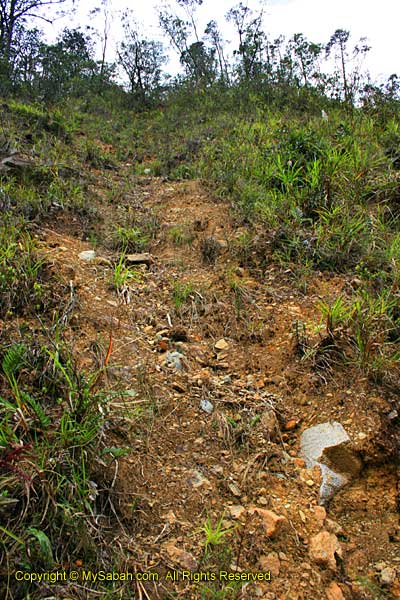
Besides Nepenthes burbidgeae and Nepenthes rajah, smaller pitchers such as Nepenthes fusca and Nepenthes tentaculata could be seen in Mesilau. Part of the trail is off-limit to tourists so I think there are more species available here. Besides the standard 11:30am guided tour, visitors can request for another tour at 2.30pm a few hours in advance. I do not recommend this. Due to little shady area on the slope, it is quite hot on the slope in the afternoon, and we want to minimise disturbance to the pitchers. BTW, you could enjoy a breath-taking view of Mt Kinabalu foothill on top of the slope (like photo below).
Walking further up and finally I saw the huge Rajah Pitcher Plant! Most of them were laying on the ground and waited for the bugs to crawl into its pitfall trap. The nectar inside pitcher lures the foraging insects to climb into pitcher, fall into the fluid and drown, then slowly digested and consumed by pitcher plant. Pitcher is not a fruit or flower, it is a modified leaf.
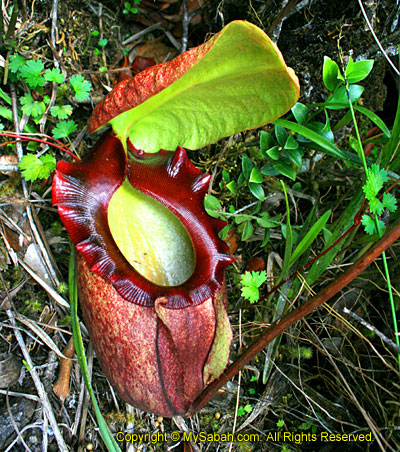
Young Nepenthes rajah is quite bright in colours. It will turn to reddish brown when grows older. To let you get an idea how big it is, I place a 1-foot ruler next to it. Sukaibin was glad to be the scale model in my photo too. Rajah can grow up to 16-inch long and hold 2.5 Litres of water. It is really the king of pitcher plant, on top of 80 Nepenthes species.
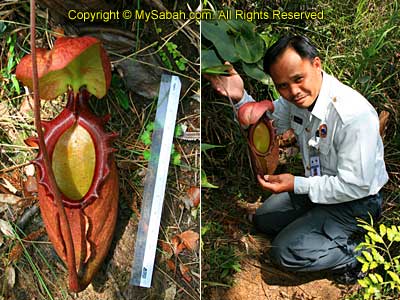
Many think that pitcher plant can move its lid up and down to chew its preys. Some even call it a man-eater. I placed my hands to its mouth and nothing happened, so you have to believe me that pitcher can’t move. I didn’t insert my hand into its mouth coz pitcher plant is sensitive. Even too many camera flash light can make it to dry up sooner, the guides told me.
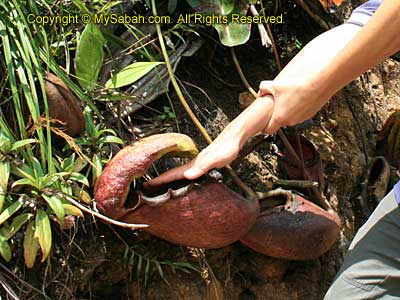
January to May is wet season so it is the best time to see pitcher plant. The pitcher can last 2 to 6 months, depending on the species. Even I went in Aug, there are still plenty of them around in Mesilau. Insects and bugs are the main food of pitchers. There are two documented cases of mouse corpses found in pitcher plant. Other small animals such as frog, lizard and snail were found too. Sorry, no baby monkey was found, like the myth claimed.
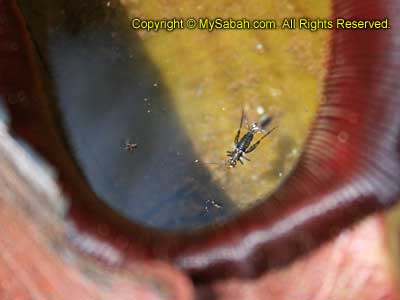
Inside pitchers is a murky and acidic liquid, which contains digestive fluid, wetting agents (to make escape harder) and rainwater. The pH can reach 1.90, so it can burn you badly if you drink it. All pitcher plants in Sabah are protected species. You can get fined RM5,000 and 2-year jail, or both, for stealing, owning and trading pitcher plant. In serious cases, the penalty can go up to RM100,000. In Sabah, there are more than 20 species of pitcher plant and many are endemic species.
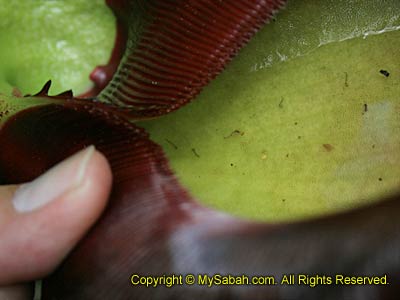
Even though the fluid in pitcher plant is very acidic, some insects are adapted to it, as shown in the photo of mosquito larvae above. Certain mosquito spends its juvenile stage in pitcher, breaking down the death insect so the pitcher plant can digest it more efficiently. Once the larva grows up, they will leave forever and never come back except laying eggs. By sharing food, the larvae can help to keep the pitcher clean inside.
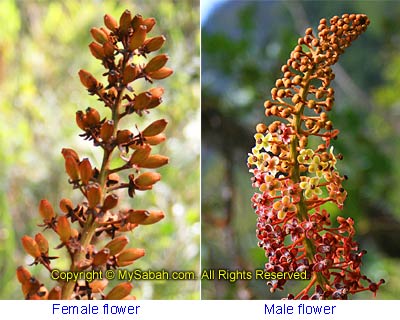
Pitcher plants kill insects but they have their own flowers that attract different kinds of insects, so they don’t go extinct by killing their pollinators every time. The seed will be distributed by wind. Surprisingly, the guide says nepenthes edwardsiana species is rarer and more sought after than rajah. It is very hard to find it and he hopes it still grows well somewhere in the park. Now I know what is my next target.
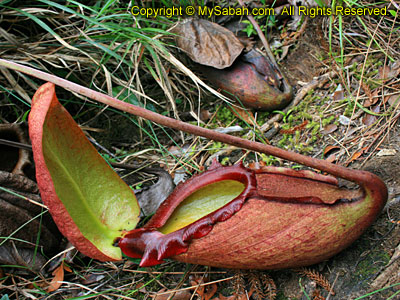
Sabah Parks tries to transplant some pitcher plants into the garden behind Mesilau Nature Resort but with little success. A long drought period can massacre pitcher plants in large number. For example, the droughts in 1997 and 1998 killed most nepenthes lowii in Mt. Kinabalu. Now we are even dealing with global warming problem, lets wish the pitchers still have a bright future.
Related posts
Lowland pitcher plants
Pitcher in Kinabalu Park
Photos taken in Mesilau, Sabah, Malaysia Borneo


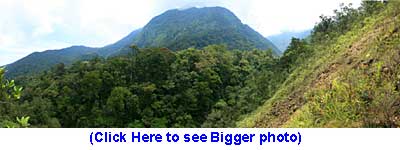
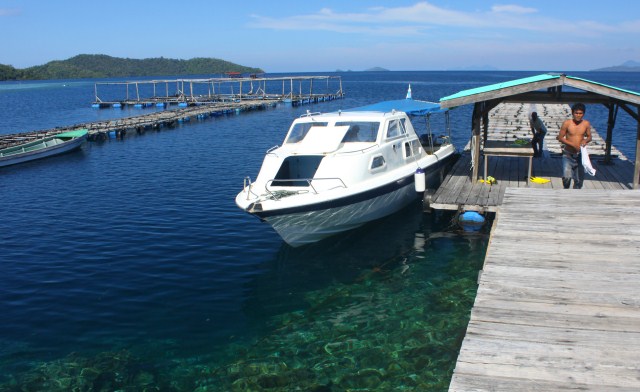

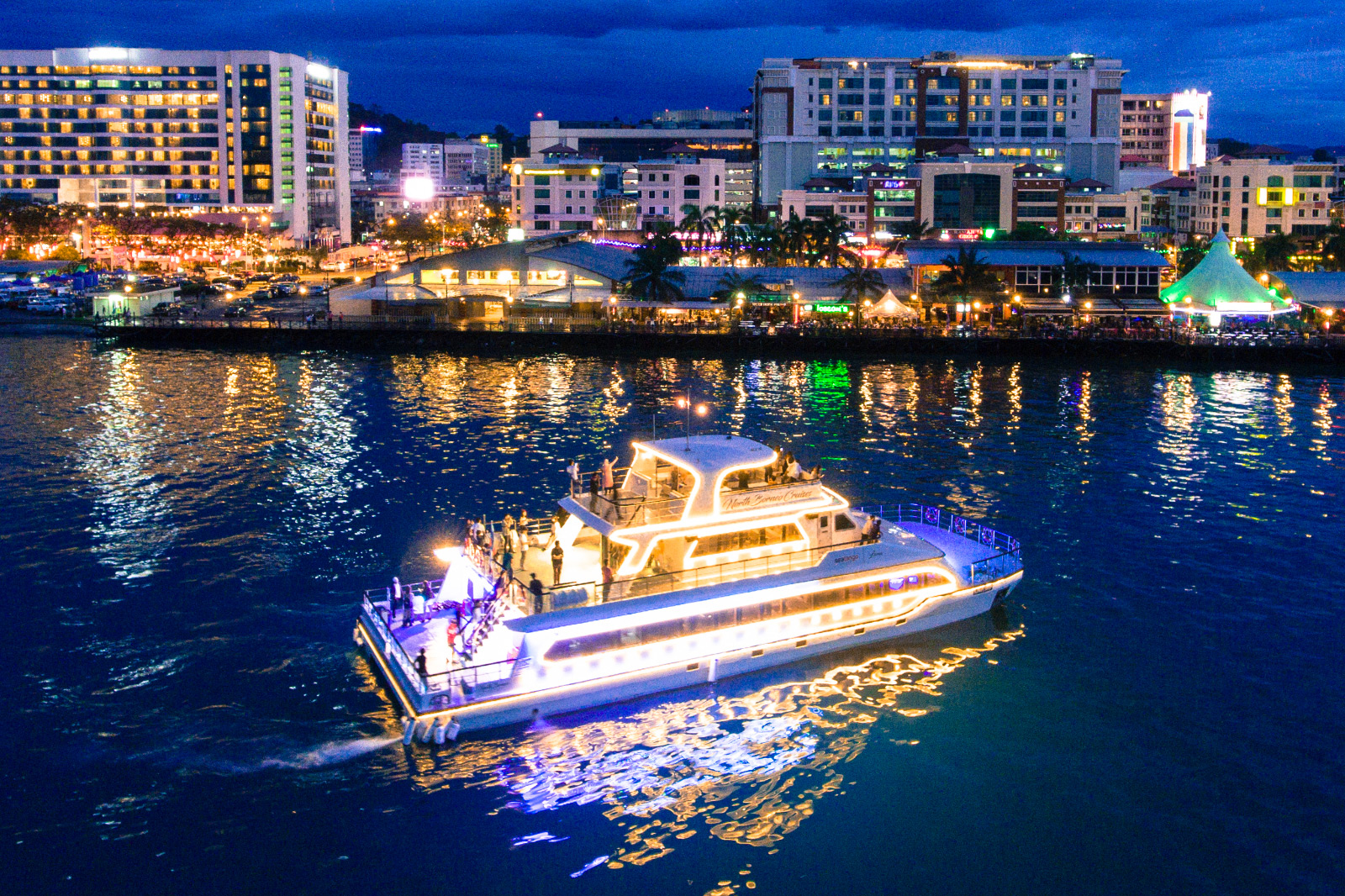
Could you recommend accommodation near Mesilau Park? Little Hut is fully booked for the day we wanted.
Much appreciation.